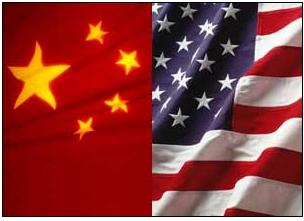Traditionally, Europe and America have enjoyed the continued dominance of Low Cost Carriers (LCC). Since 2003, a number of Low cost airlines have entered the Indian market. However, most of them are making losses largely due to high cost of ATF (Air Turbine Fuel) which comprises around 50% of the operational cost. Post-2007, the industry has also witnessed consolidation, the most notable ones being the acquisition of Air Deccan by Kingfisher & Air Sahara by Jet Airlines.
In the year 2003, Captain Gopinath started Air Deccan. It opened up the skies for everyone to fly by offering very cheap air fares. While the established players like Indian Airlines and Sahara initially ignored the move, the urge to fill the seats prompted them to cut fares. This catapulted the boom of LCCs in India and the start of a price war that has cost the industry dearly.
In addition, the market attracted several players like Paramount, Indigo, Spicejet, Go Air to enter an already crowded LCC segment of Indian aviation.
Why airlines companies in India are bleeding
Indian carriers made a loss of around 10000 crores in 2012-13 while the total industry debt stood at around Rs 78000 crores with only Indigo and Go Air being profitable in 2012-13. The spiralling cost of Air Turbine fuel, falling rupee, economic slowdown and high operation costs are some of the reasons for this downfall. Despite these challenges, Air Asia and Singapore airlines have recently entered the Indian markets. These companies have huge cash pools and have offered tickets at prices cheaper than existing domestic carriers. In such a scenario, it becomes even more difficult for the Indian LCCs to survive.
Pricing and Load factor: These two factors are undoubtedly the biggest challenges of LCCs in India.
Infrastructure: Inadequate facilities in the airports are also impacting operational efficiency.
Increased competition: With more number of LCCs and increased competition, the various players are unable to achieve the desired load factor leading to declining margins.
Strategy for a good Low Cost Carrier
Choice of Fleet: For any low cost carrier, the choice of fleet is very important. By having a uniform fleet, one can save training, engineering and maintenance costs. Moreover, the average fleet age should be around 4-5 years to maximize the fuel efficiency
Ancillary Revenue: Low Cost carriers in India have understood the importance of ancillary revenue from players in US and Europe. Be it Ryanair of Europe or South-West Airlines, they try to generate revenue from ancillary services like advertising on the cabin seats, advertising on the fleet and in-flight magazines. This trend is also reflected in Indian LCCs.
Capacity Utilization: Successful LCCs should try to utilize their fleet to maximum capacity. The ideal parameter for the LCCs to use to assess capacity utilization is turnaround time which should be around 20-25 minutes.
Organization Structure: If you see the organizational work structure of LCCs in US or Europe, most of them are frugal. The top management emphasizes on cost savings wherever possible. For a successful LCC, it is highly important to have a workforce, with productivity linked pay structure, that helps the company save costs.
No frills: Low Cost Carriers should not give any frills and the positioning of the airlines should be very clear in this respect: No meals, no baggage transfer and no assigned seats for free. These strategies will help the airline to save time, achieve the target turnaround time and improve profitability.
Overall, if the above steps are carefully implemented, only then a low cost airline in India will be able to operate profitably.

































